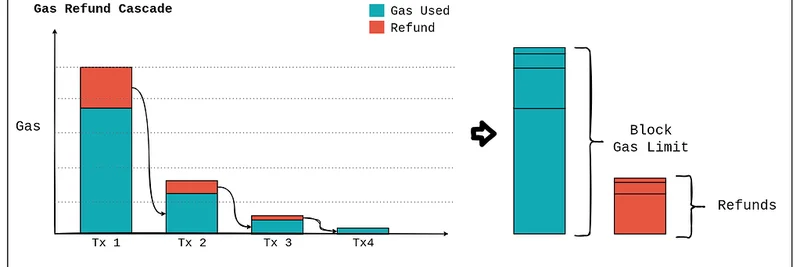Hey there, crypto enthusiasts! If you’ve been keeping an eye on Ethereum’s evolution, you might have come across some buzz about gas refunds and a new proposal called EIP-7778. Recently, Toni Wahrstätter (@nero_eth) shared an insightful thread on X that breaks down this complex topic. Let’s dive into what it’s all about, why it matters, and how it could shape the future of Ethereum!
What Are Gas Refunds and Why Do They Matter?
First things first—let’s talk about gas refunds. On Ethereum, "gas" is the fuel that powers transactions and smart contracts. Every time you interact with the network, you pay a certain amount of gas. But here’s the cool part: if you clear out storage slots (like deleting data) or use a function called SELFDESTRUCT on a contract, you can get some of that gas back as a refund. This is designed to encourage users to help reduce "state bloat"—a fancy term for when a blockchain gets clogged with too much data, making it slower and harder to manage.
The catch? These refunds don’t just benefit users—they can mess with how we measure a block’s true workload. According to Toni’s thread, setting a storage slot to zero with SSTORE can earn you a refund (up to 20% of the gas used). This refund lowers both your transaction’s gas usage and the block’s total gas usage. Sounds great, right? Well, not exactly. It makes blocks look less resource-intensive than they really are, which can hide the real effort the network is putting in.
The Problem with Gas Refunds
Here’s where things get interesting. Toni’s thread uses a handy diagram to show how this works. Imagine a block with several transactions (let’s call them Tx 1, Tx 2, Tx 3, and Tx 4). Each transaction uses gas, and some get refunds. These refunds can "cascade"—meaning the refund from one transaction can help fund the next one, as long as the refund amount stays above 21,000 gas. The result? A block can end up doing about 125% of its gas limit in actual work without anyone noticing!
This distortion becomes a bigger issue as Ethereum’s gas limit increases. If blocks can handle more transactions, the hidden workload grows too. Toni points out that this could lead to network overload or even open the door to attacks if not addressed. It’s like letting someone sneak extra luggage onto a plane without the crew knowing—eventually, it could cause problems!
Enter EIP-7778: The Fix We Need?
So, what’s the solution? That’s where EIP-7778 comes in. This Ethereum Improvement Proposal suggests a simple but clever change: stop applying refunds to the block’s gas usage. Instead, refunds will only affect the user’s transaction cost. This means the block’s gas accounting will reflect the true workload, giving us a clearer picture of what’s happening on the network.
The best part? This change won’t mess with users’ experience. You’ll still get your refunds, and the impact on how blocks are packed will be minimal since the average number of refunds is low. Toni links to the official EIP page (eips.ethereum.org) for more details, and it’s worth a read if you’re into the nitty-gritty.
Why This Matters for Meme Token Fans
You might be wondering, “How does this affect me if I’m into meme tokens?” Well, meme tokens often rely on Ethereum’s infrastructure. As the network becomes more efficient and scalable, it can handle more transactions—like those crazy meme coin pumps—without breaking a sweat. Plus, understanding gas refunds and proposals like EIP-7778 can help you stay ahead of the curve as a blockchain practitioner. Whether you’re trading PEPE or DOGE, a smoother Ethereum network means lower costs and faster trades!
Wrapping Up
Toni’s thread is a goldmine for anyone wanting to understand the inner workings of Ethereum. Gas refunds are a double-edged sword—great for users but tricky for network health. With EIP-7778 on the horizon, Ethereum is taking steps to balance efficiency and transparency. Keep an eye on meme-insider.com for more updates on how these changes might impact the meme token world and beyond. Got questions? Drop them in the comments—we’d love to chat!




